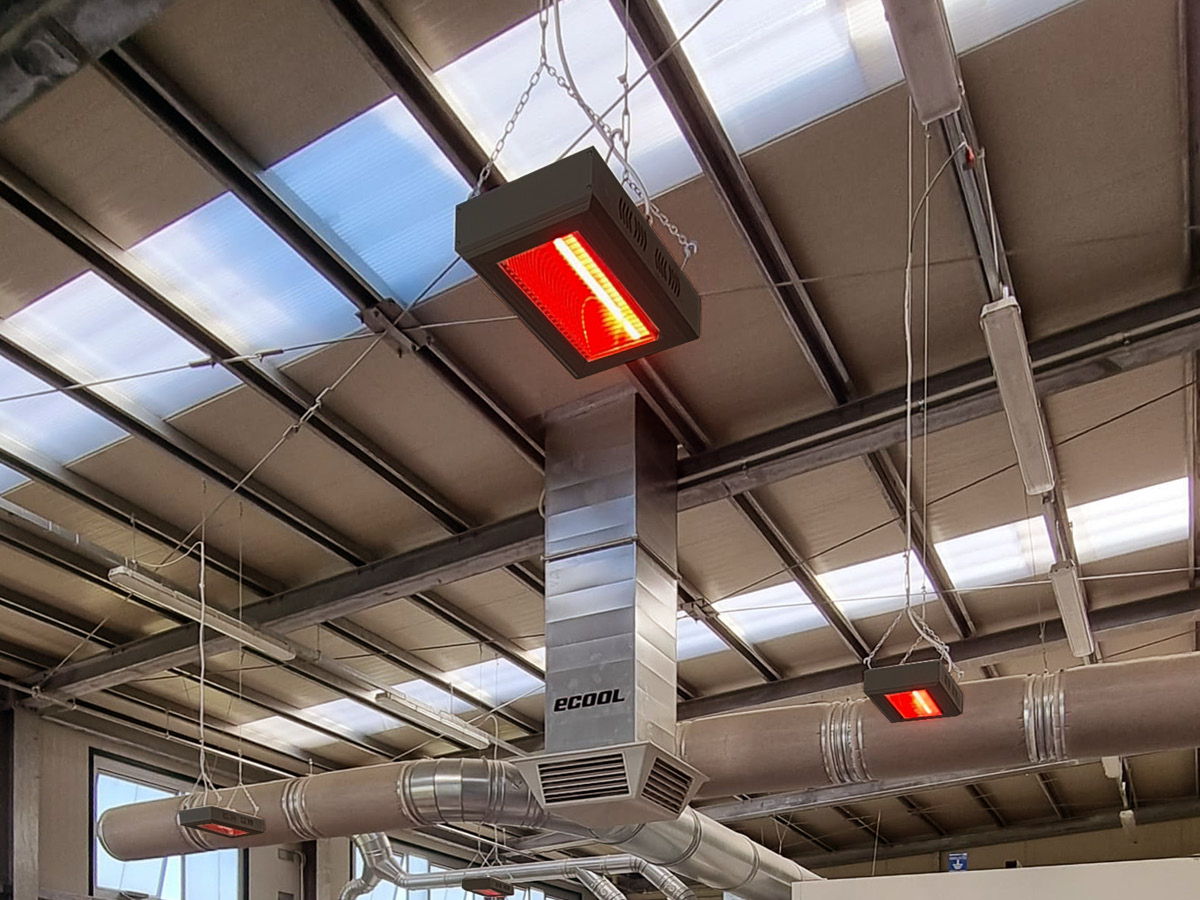
Infrared radiation is a form of electromagnetic energy with a frequency lower than visible light but higher than radio waves. The term infrared comes from the Latin infra (“below”) and refers to the fact that these waves are located just below red in the visible spectrum.
Infrared is directly associated with heat: any object with a temperature above absolute zero naturally emits infrared waves. The higher the object’s temperature, the more its wavelength approaches that of visible light, until the object becomes incandescent.
This principle is the foundation of radiant heating — a system that does not warm the air, but instead transfers heat directly to objects, surfaces, and people. The result is a uniform and natural thermal comfort, similar to the warmth of the sun.
Types of Infrared and Applications in Heating
Infrared heating systems and radiant lamps are classified according to the wavelength they emit:
Short-wave infrared: short-wave infrared heaters generate immediate but more superficial heat. They operate at very high temperatures (between 800°C and 1200°C) and can transmit up to 97% of thermal energy through the air, directly irradiating surfaces. These heaters are ideal for outdoor environments or areas requiring fast, direct heating.
Medium-wave infrared: medium-wave infrared lamps emit very little visible light and can penetrate deeper into solid materials and the human body. They provide a diffused, uniform, and comfortable warmth that persists even after the system is switched off. They are ideal for homes, offices, and commercial spaces where a natural and consistent heat sensation is desired.
Long-wave infrared: long-wave infrared heaters, also known as infrared radiant panels, emit no visible light and operate at lower temperatures (up to 380°C). They are extremely efficient in transferring heat by radiation and can warm objects at distances greater than 12 meters. These systems are ideal for indoor environments such as homes, gyms, spas, and offices, thanks to their silent operation and low energy consumption.
Safety, Benefits, and Environmental Impact of Infrared Heating
All infrared heating systems are safe, environmentally friendly, and non-invasive. They produce no CO₂ emissions, no dust or fumes, and help create a cleaner and healthier environment. Moreover, long-wave infrared radiation is the same type of heat used in many wellness and therapeutic treatments, such as those in spas and health centers, to improve circulation and relax muscles.
To date, no scientific studies have shown any negative effects or health risks associated with exposure to the electromagnetic waves emitted by infrared heaters or radiant heating panels.

